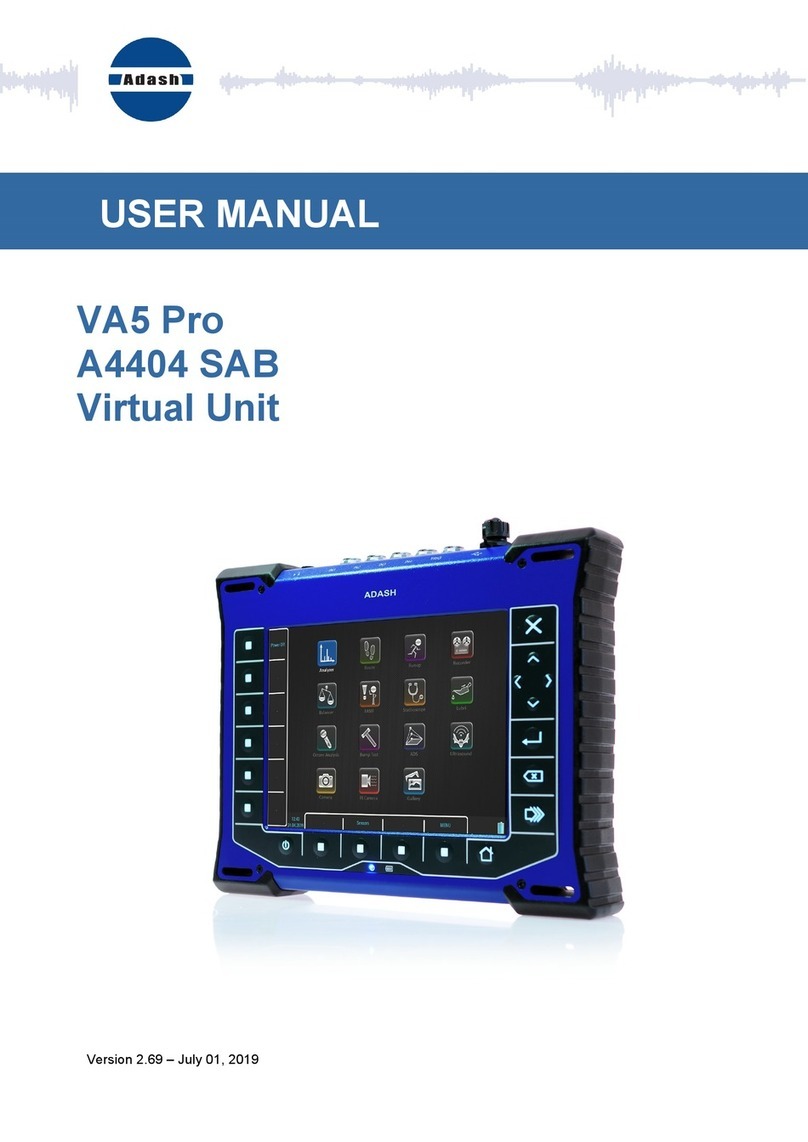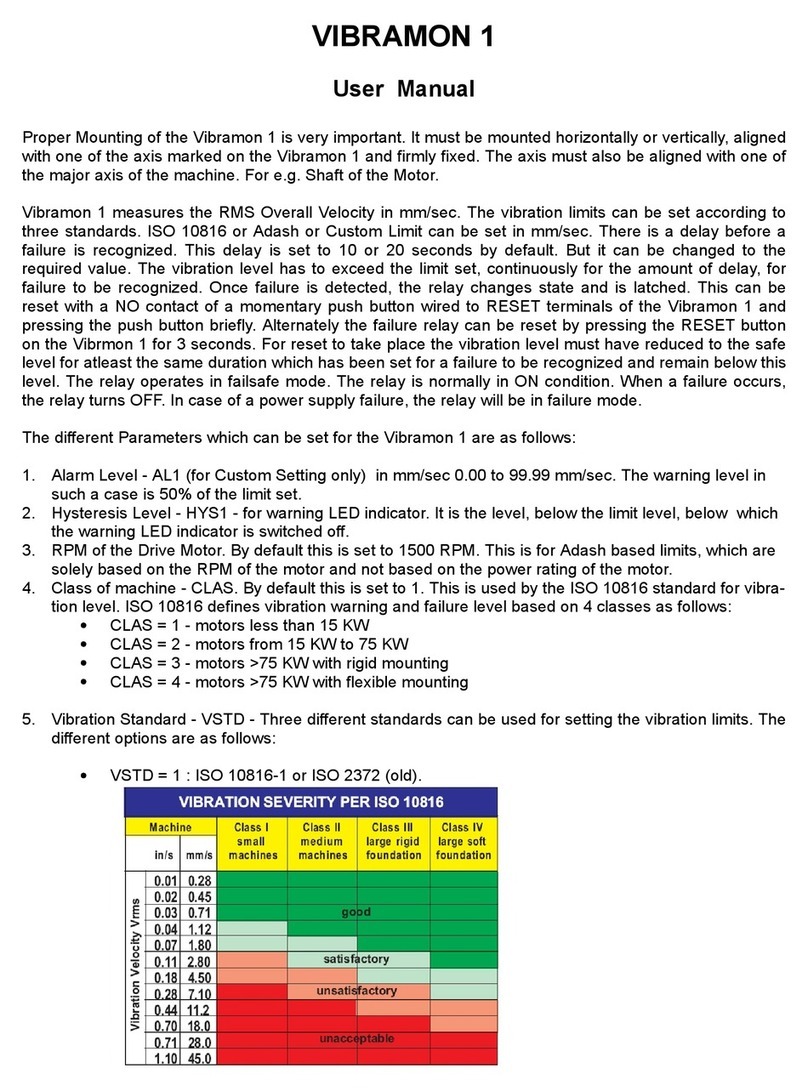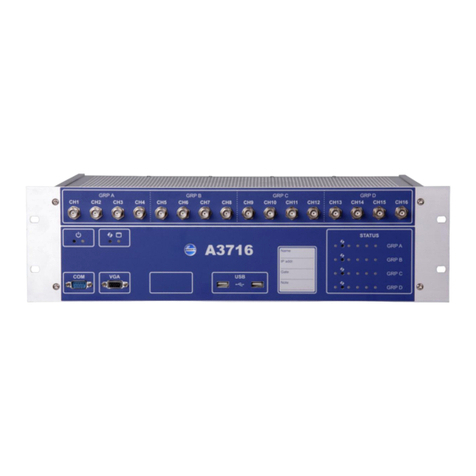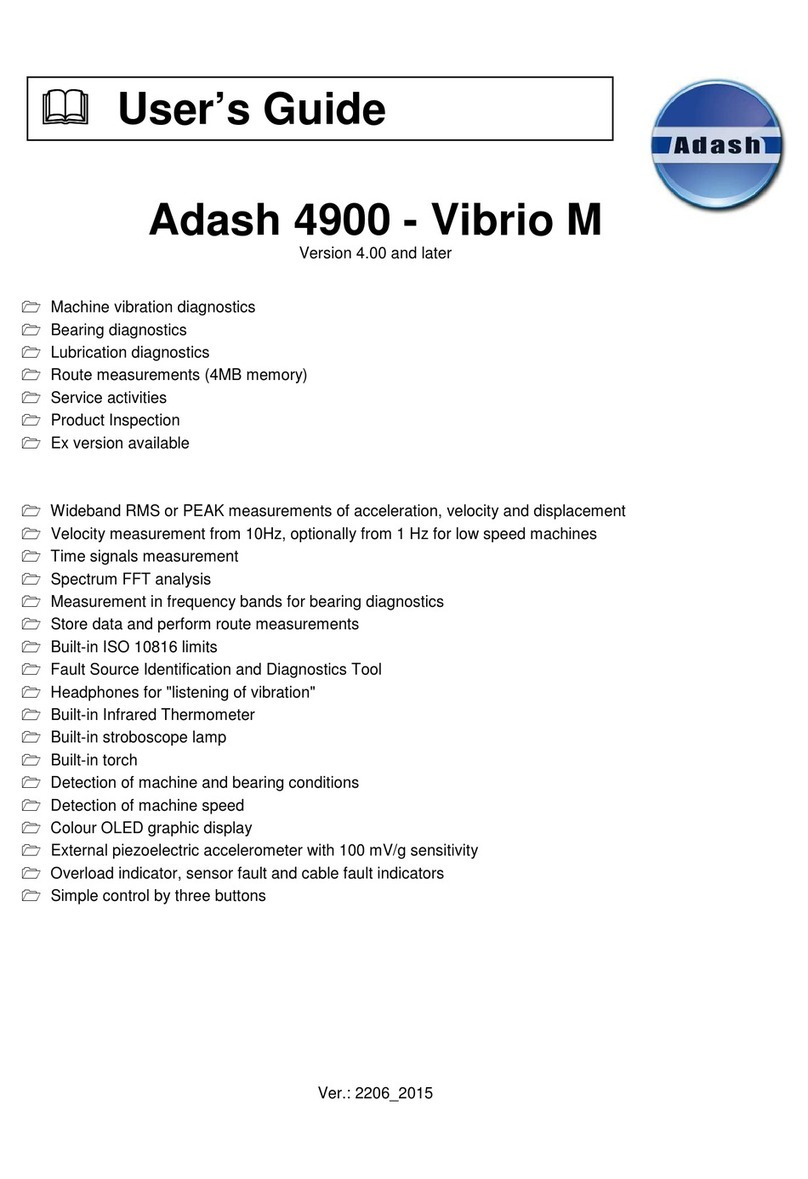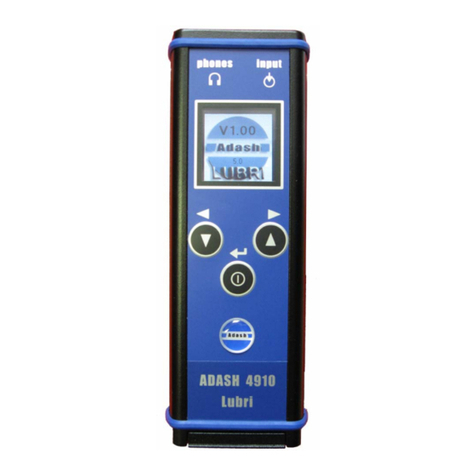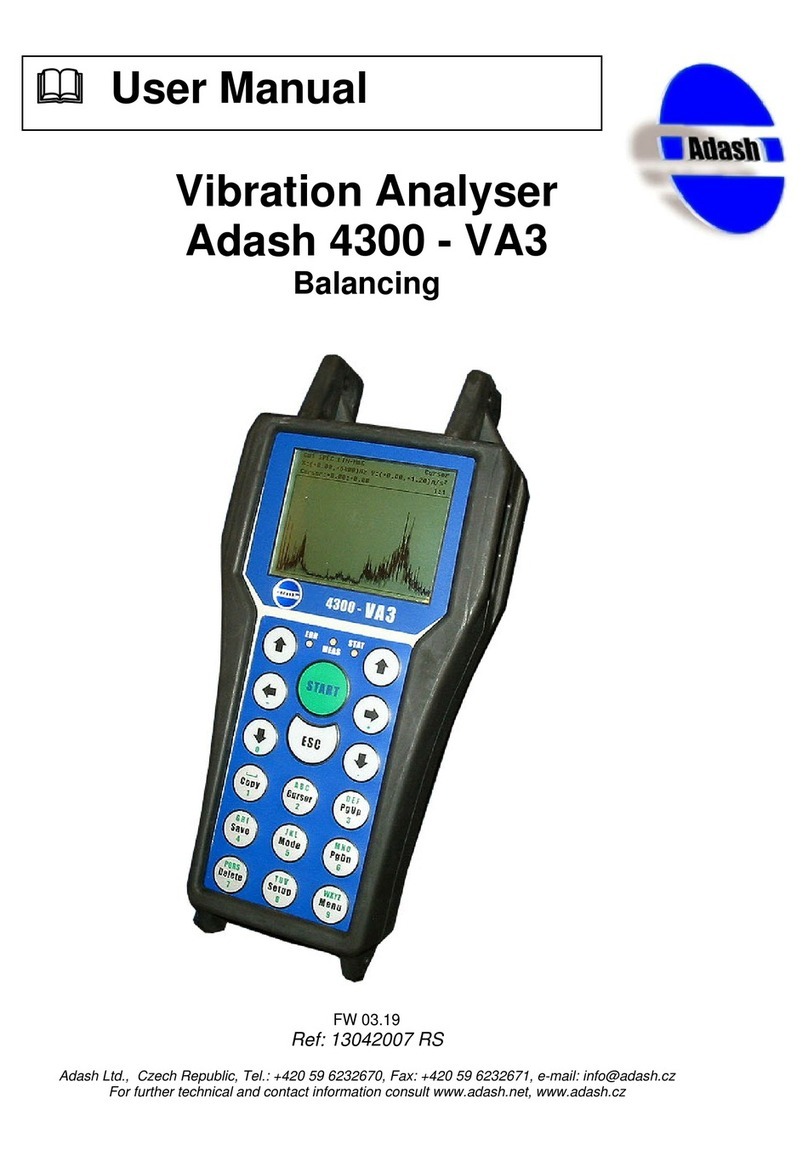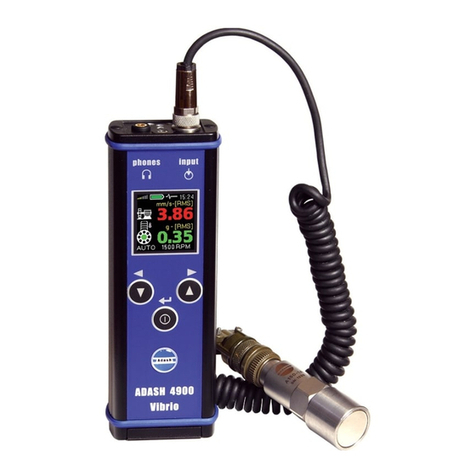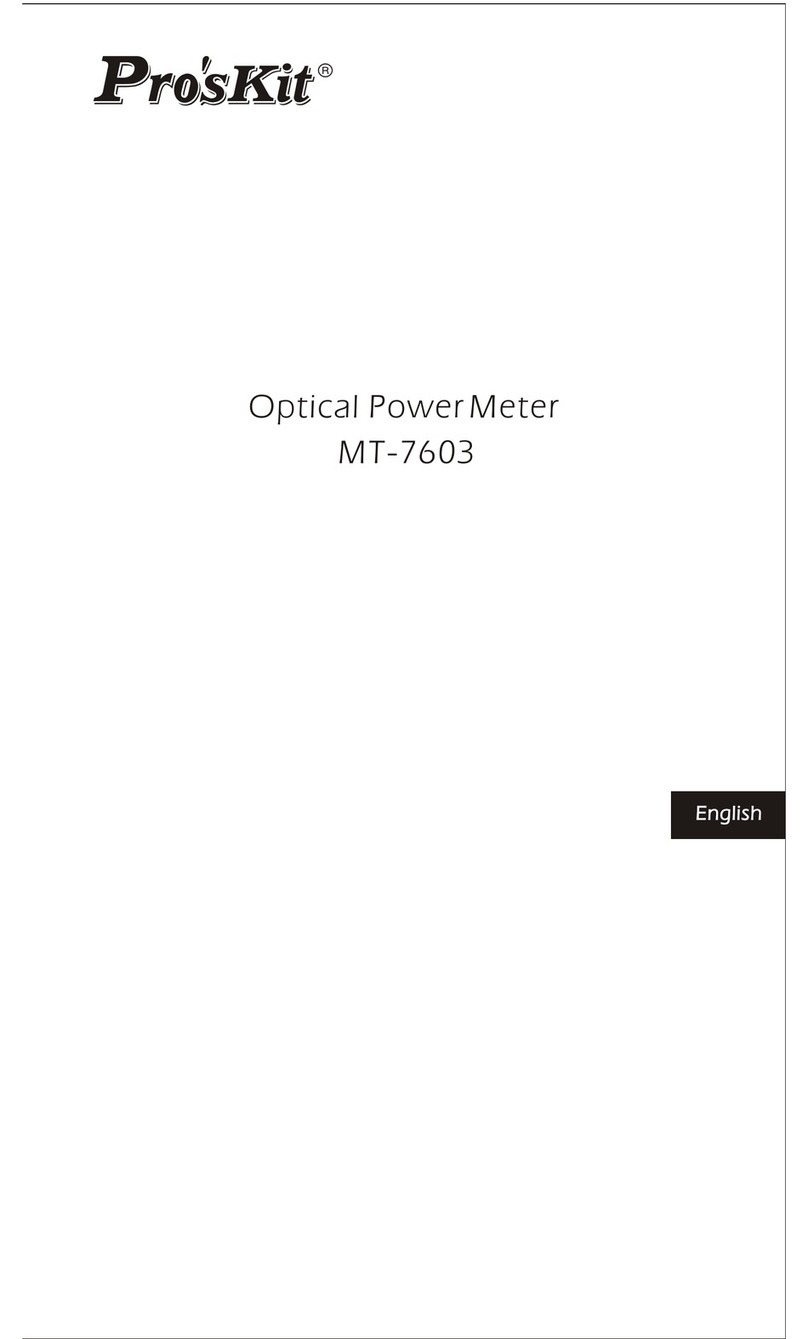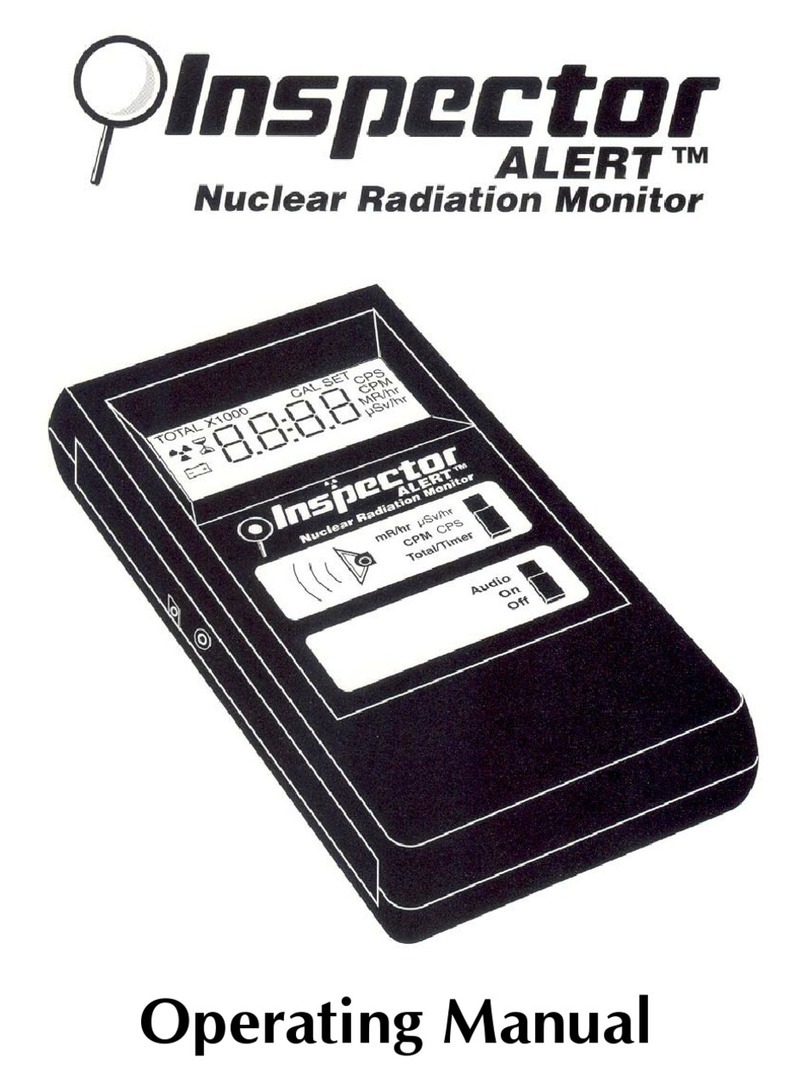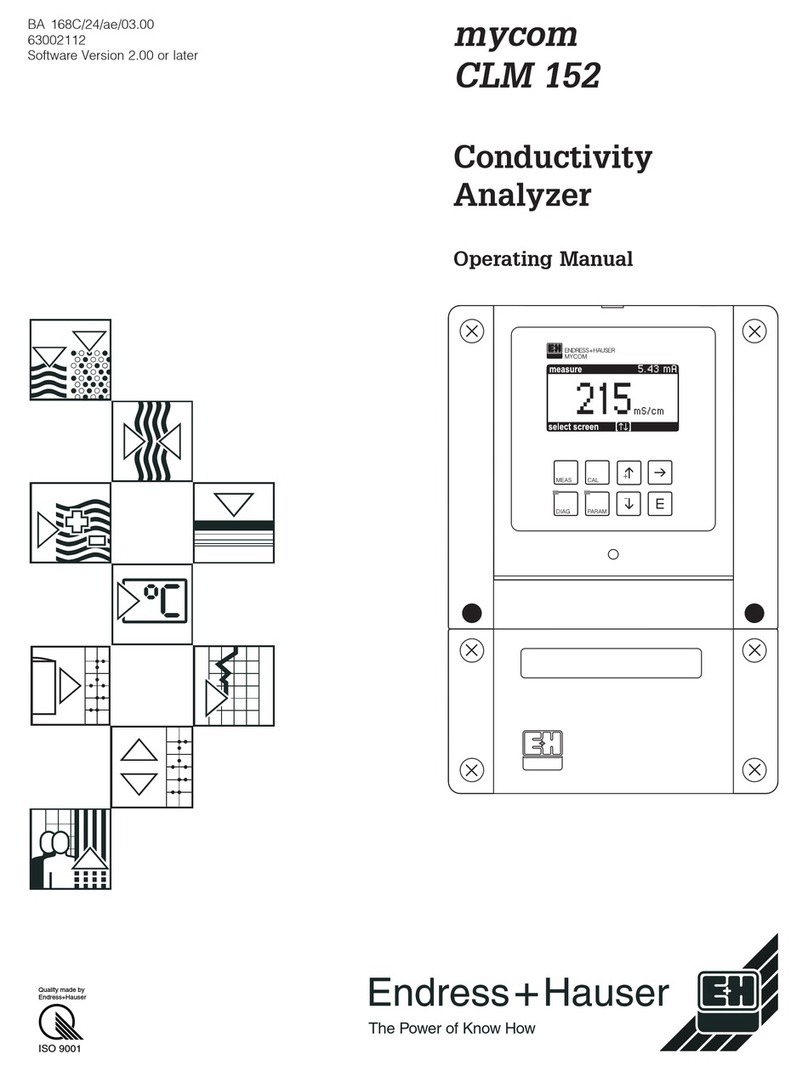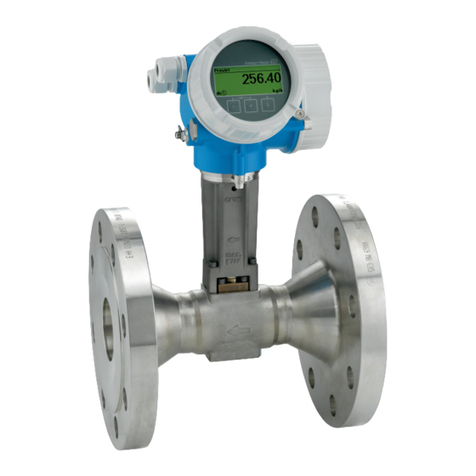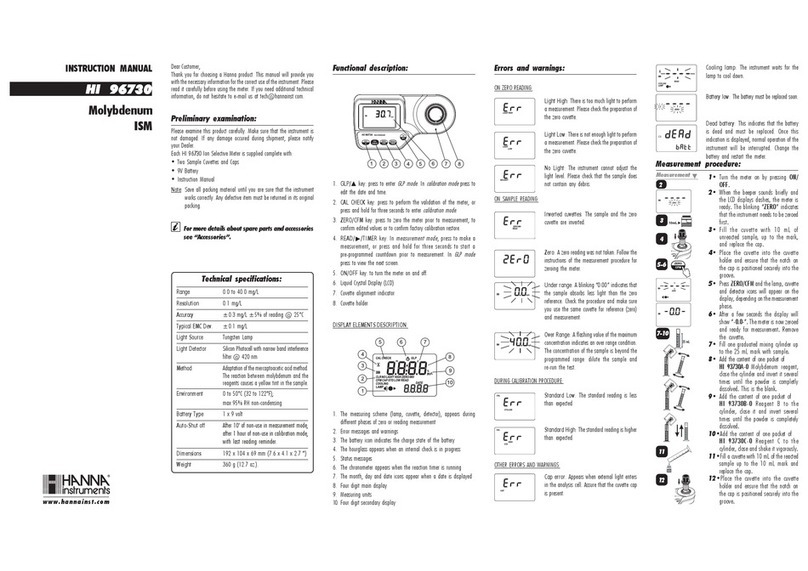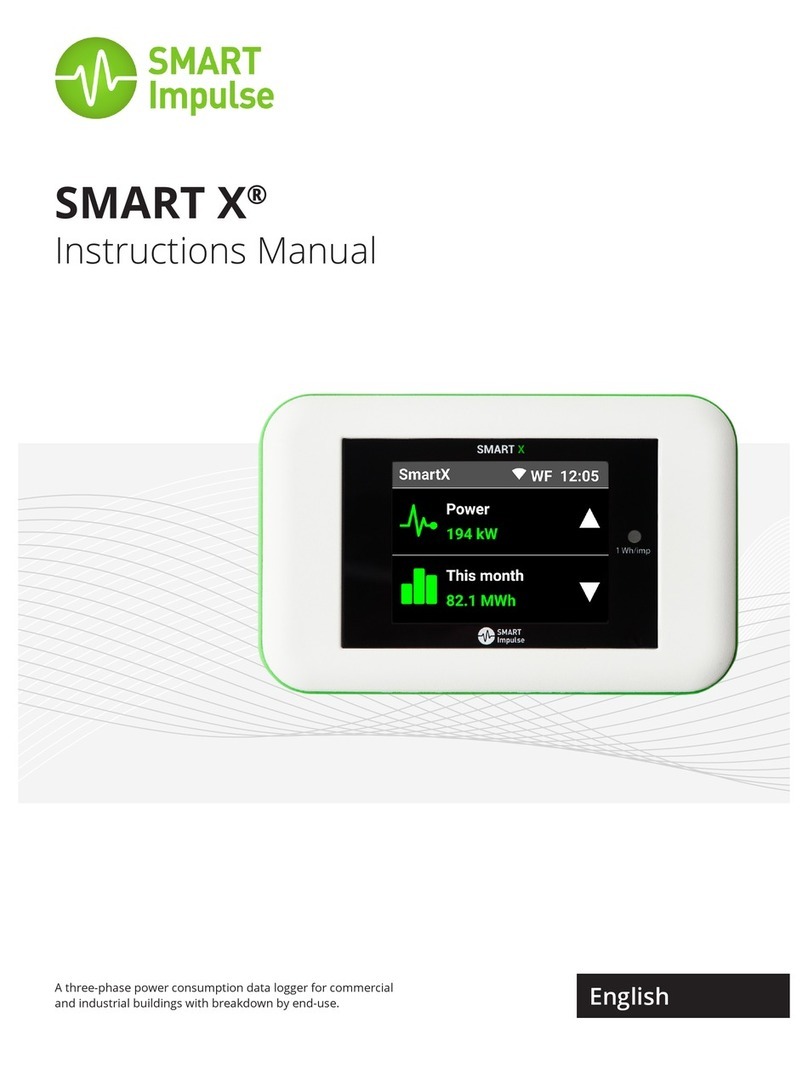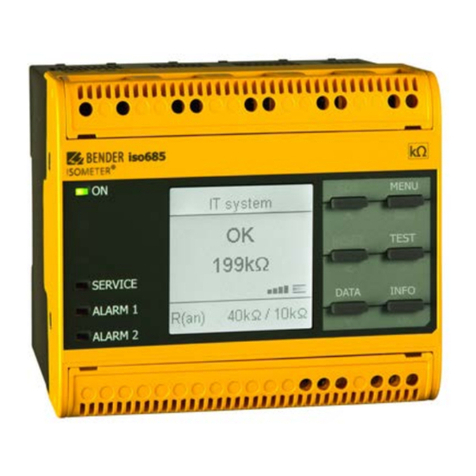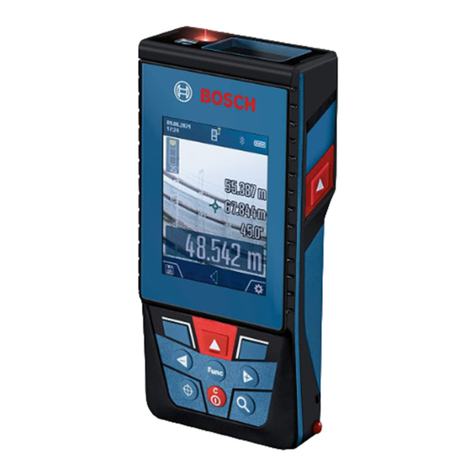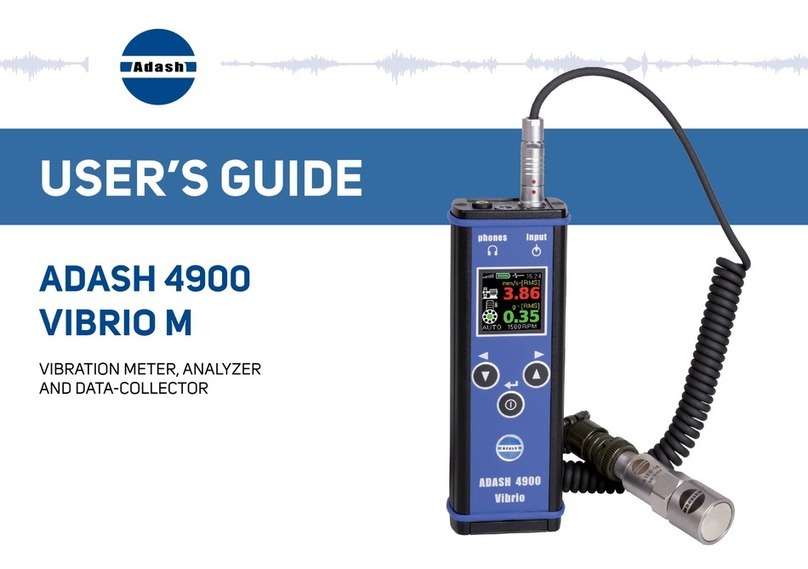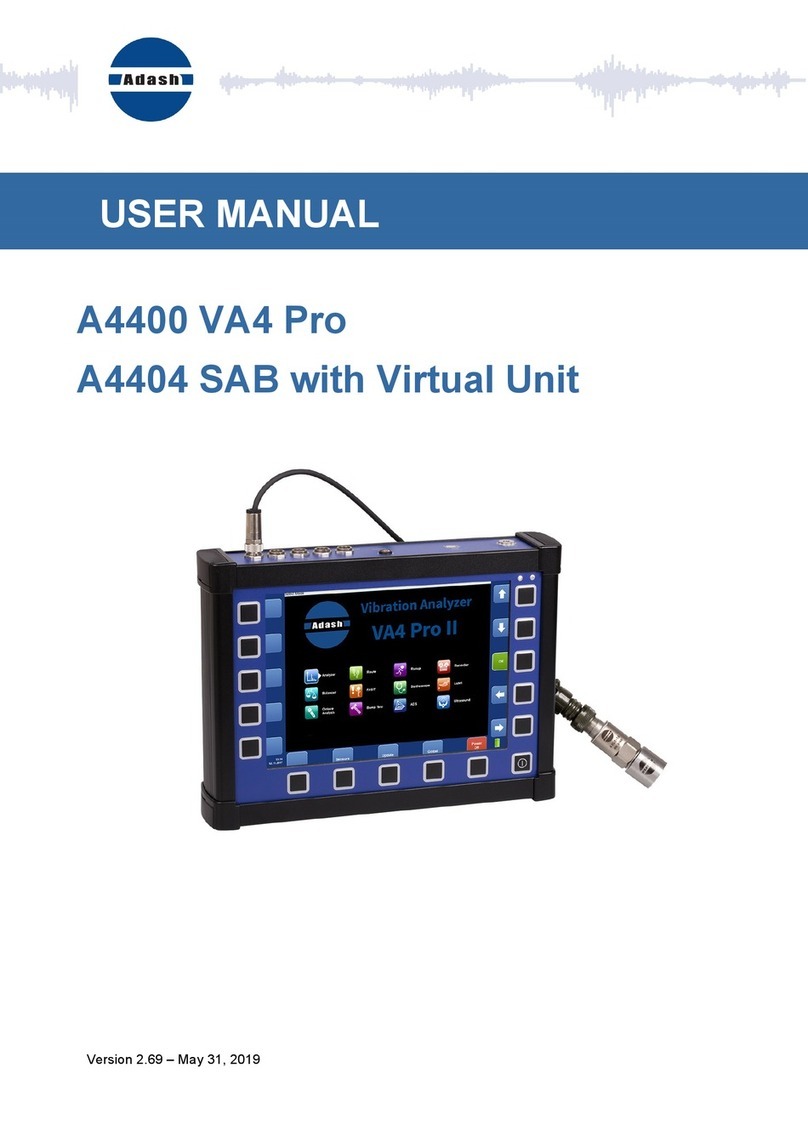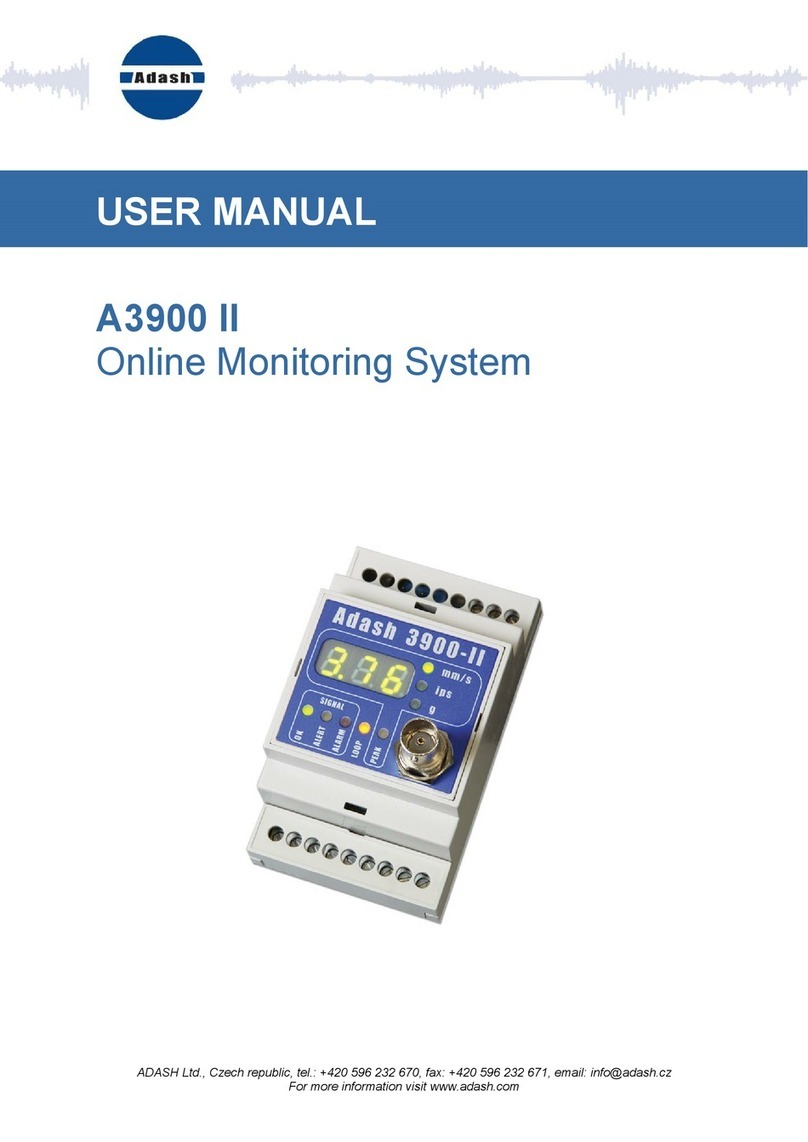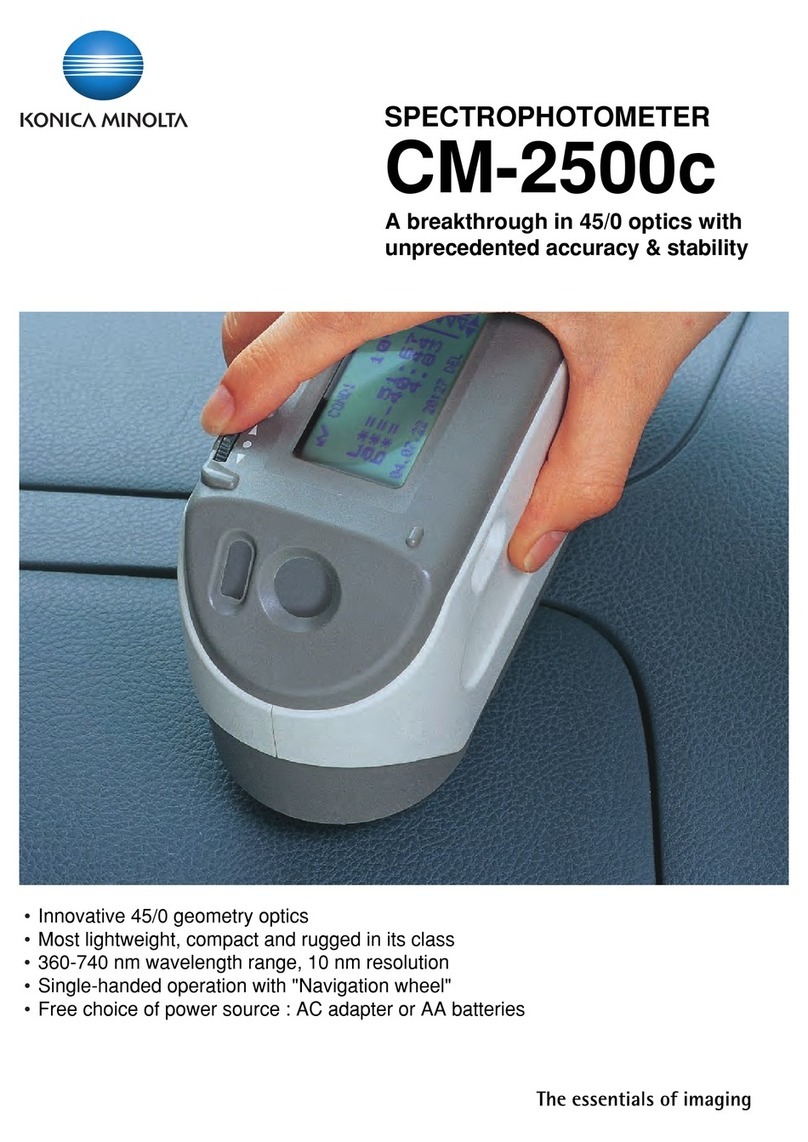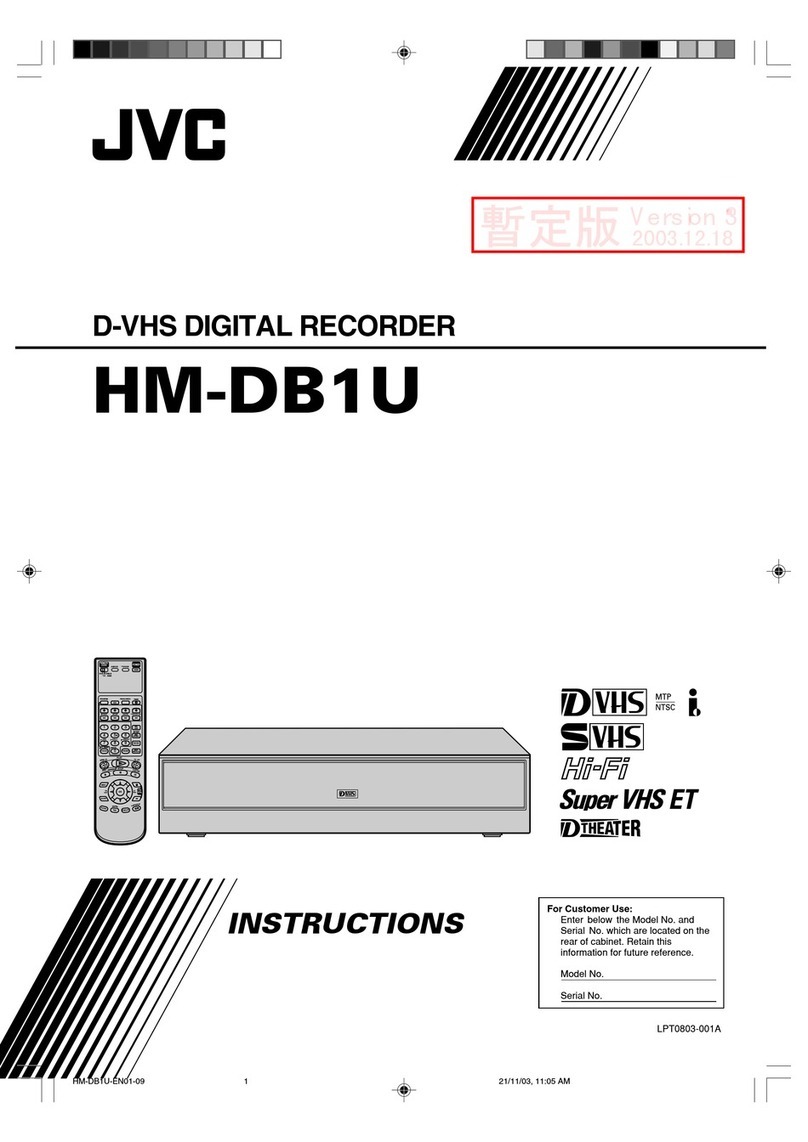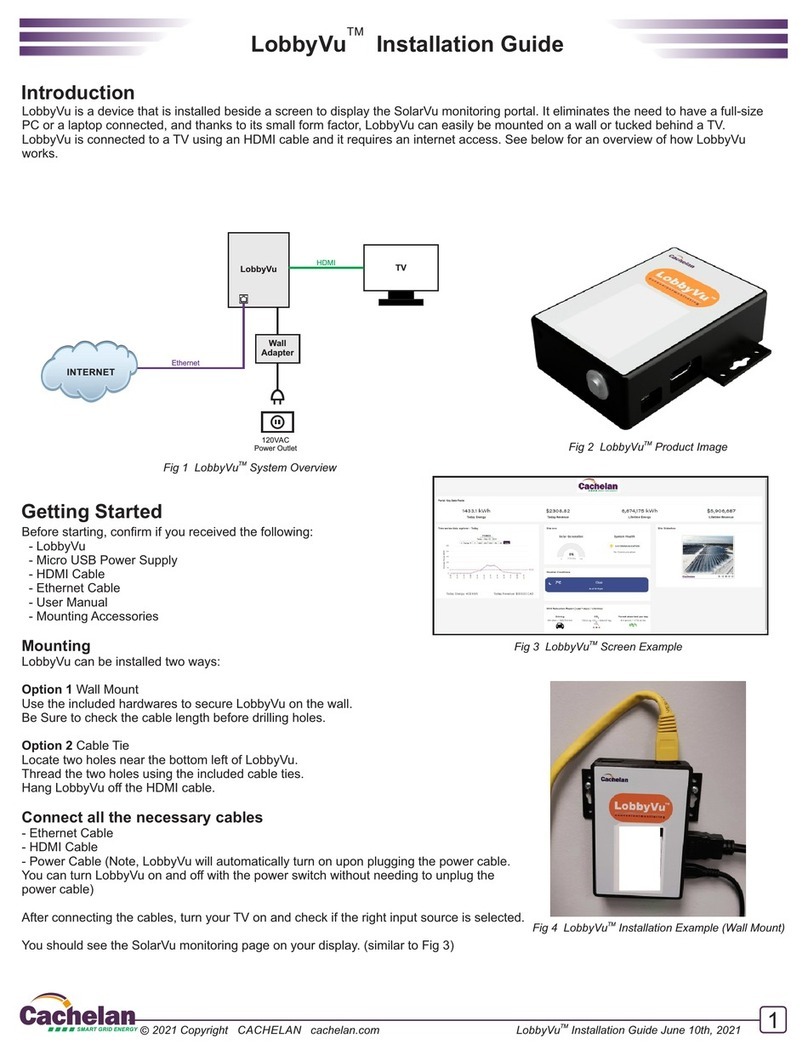ADASH Ltd. Adash 4900 – Vibrio III
2
Contents
Why perform vibration diagnostics ......................................................................................4
Vibration Diagnostics - Basic Information...........................................................................5
Introduction..........................................................................................................................5
Basic Rules..........................................................................................................................5
Machine and bearing condition diagnostics.........................................................................6
Methods for ball bearing condition diagnostics....................................................................6
The relation between gears and ball bearings.....................................................................6
FASIT - Fault Source Identification Tool..............................................................................7
Measurement Points............................................................................................................7
The preparation of the measurement point..........................................................................8
Listening to Vibrations Using Headphones..........................................................................9
Relationship of Measuring in Acceleration and Speed ........................................................9
Abbreviations used in the guide...........................................................................................9
What Will You Get with Your Instrument ...........................................................................10
Instrument and accessories...............................................................................................10
Before You Start ...................................................................................................................11
Standards for vibration measurements .............................................................................12
Adash Limit Values of Machine and Bearing Vibrations ....................................................13
ISO 10816 limit values.......................................................................................................14
Classification according to machine type, nominal power or shaft height.................................. 14
Classification according to foundation........................................................................................ 14
Evaluation ranges ....................................................................................................................... 14
Classification of vibration values for machines groups 1 and 3 ................................................. 15
Classification of vibration values for machines groups 2 and 4 ................................................. 15
Values setting in A4900 Vibrio III unit ................................................................................15
Quick Start ............................................................................................................................16
Preparation of Measurement Point ....................................................................................16
Putting in Batteries.............................................................................................................16
Plugging in Vibration Sensor .............................................................................................17
Connectors ........................................................................................................................18
Measuring..........................................................................................................................18
Automatic determination of the machine speed.................................................................18
Evaluation of the machine and bearing conditions ............................................................18
Fasit Expert System...........................................................................................................19
The Stroboscope ...............................................................................................................19
The Torch ..........................................................................................................................20
Instrument Operation...........................................................................................................21
Switching on and off ..........................................................................................................21
Information line ..................................................................................................................22
Using of Headphones ........................................................................................................22
Selection of Measurement .................................................................................................23
Measurement Methods Screens........................................................................................23
Speed detection and definition ..........................................................................................25
Menu for functions selection..............................................................................................26
LIGHT ......................................................................................................................................... 26
STROBO..................................................................................................................................... 27
VOLUME..................................................................................................................................... 27
SETUP........................................................................................................................................ 28
SPEED........................................................................................................................................ 28
ALARMS ..................................................................................................................................... 28




















